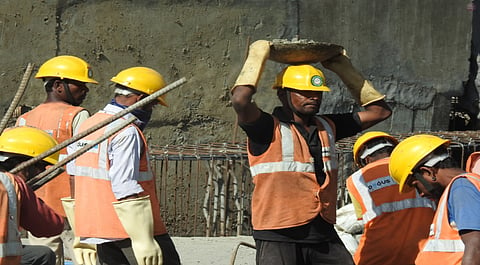
- Latest Legal News
- News
- Dealstreet
- Viewpoint
- Columns
- Interviews
- Law School
- Legal Jobs
- हिंदी
- ಕನ್ನಡ

Shardul S Shroff, Pooja Ramchandani and Ulka Bhattacharyya
Part One
The enactment of the Code on Wages, 2019 (‘Wage Code’) is a long-awaited first step in rationalizing India’s labour laws. This is significant from the standpoints of greater compliance and facilitating the ease of doing business. Further, this is a critical reform in an area already in focus post the recent Economic Survey and Union Budget.
India’s regulatory framework governing labour laws is complex. The proposed creation of four Labour Codes (including the Wage Code), streamlining multiple central labour laws on wages and bonus, occupational health and safety, social security and industrial relations, respectively, is therefore, a much-needed step towards consolidation and simplification.
Part one of this article highlights and analyses the Wage Code’s key features. Part two highlights other changes introduced by the Wage Code, and highlights areas where implementational challenges may be faced in the days to come.
Background
The Wage Code was originally drafted in 2017 to amalgamate and rationalize laws relating to wages and bonus. Its Preamble states its aim to “amend and consolidate the laws relating to wages and bonus and matters connected therewith or incidental thereto”.
An earlier draft was introduced in the Lok Sabha in August, 2017 and referred to the Standing Committee on Labour, which submitted its Report in December, 2018. The Wage Code was approved by the Lok Sabha on 30 July 2019, by the Rajya Sabha on 2 August, 2019 and finally received Presidential assent on 8 August, 2019. Thus, the enactment of the Wage Code represents a significant overhaul of India’s labour laws in relation to wages and bonus.
Analysing the impact of key provisions of the Wage Code
The Wage Code consolidates four laws on the payment of wages and bonus viz. the Payment of Wages Act, 1936 (‘PW Act’), the Minimum Wages Act, 1948 (‘MW Act’), the Payment of Bonus Act, 1965 (‘PB Act’) and the Equal Remuneration Act, 1976. These laws stand repealed on the Wage Code’s enactment.
The Wage Code essentially consolidates the aforementioned laws, with some additions and departures. While this consolidation aids enforcement, implementation and harmonization, the ultimate effectiveness of the Wage Code can only be tested in the days to come.
In this context, it is important to understand the changes brought about by the Wage Code in terms of definitions, additions and deletions. It is important to note that the Wage Code now applies to all employees (except possibly for payment of bonus). This has been done by eliminating the eligibility threshold existing under the Payment of Wages Act, 1936 (‘PW Act’). The Wage Code has also done away with ‘scheduled employment’, implying that minimum wages must be paid across all industries.
One standout reform concerns introducing the concept of a ‘floor wage’, notified by the Central Government, varying across geographical areas. This floor wage functions as a baseline for State-level minimum wages. The Wage Code provides for review/revision of minimum wages at intervals not exceeding five years. Further, the wage period and time limits for paying wages have been specifically prescribed, unlike earlier.
In relation to the law on bonus, the Wage Code changes the eligibility criteria for the payment of bonus and how it is calculated. Previously, eligibility hinged on a prescribed wage ceiling, which will now be notified by the Government. Further, under the Wage Code, bonus is calculated on the higher of the notified wage ceiling or the minimum wage. However, employees earning wages higher than the notified wage ceiling may not be entitled to bonus under the Wage Code. Thus, the Wage Code provides that for eligibility for bonus wages should not exceed the notified wage ceiling, while for calculating bonus, wages may exceed a notified wage limit. This creates avoidable confusion, raising doubts as to whether the notified wage ceiling is the same for eligibility and calculation of bonus, and whether the bonus provisions of the Wage Code are intended to cover all employees or not.
Further, conviction for sexual harassment is now an additional disqualification for the payment of bonus. This is a step in the right direction, which did not exist under the previous PB Act.
On the connected themes of compliance and enforcement, the Wage Code envisages certain reforms. The ‘inspector’ under the previous regime has been replaced with an ‘Inspector-cum-Facilitator’, who has additional duties of guiding and advising employers and employees on effective implementation. Inspections are now possible through a web-based inspection scheme and electronic summoning of information, which may ease compliance burdens, and be in sync with current trends towards digitalization.
Penalties for non-compliances have now been substantially enhanced, which may foster a compliance culture by acting as a deterrent. Additionally, providing for compounding of offences may lead to greater enforcement. Finally, the Code clearly prescribes the burden of proof in case of claims of non-payment or deficient payment of wages or bonus to be on the employer.
About the authors: Shardul S. Shroff is the Executive Chairman of the law firm, Shardul Amarchand Mangaldas & Co. Pooja Ramchandani is a Partner whereas Ulka Bhattacharyya is Research Fellow at the firm.